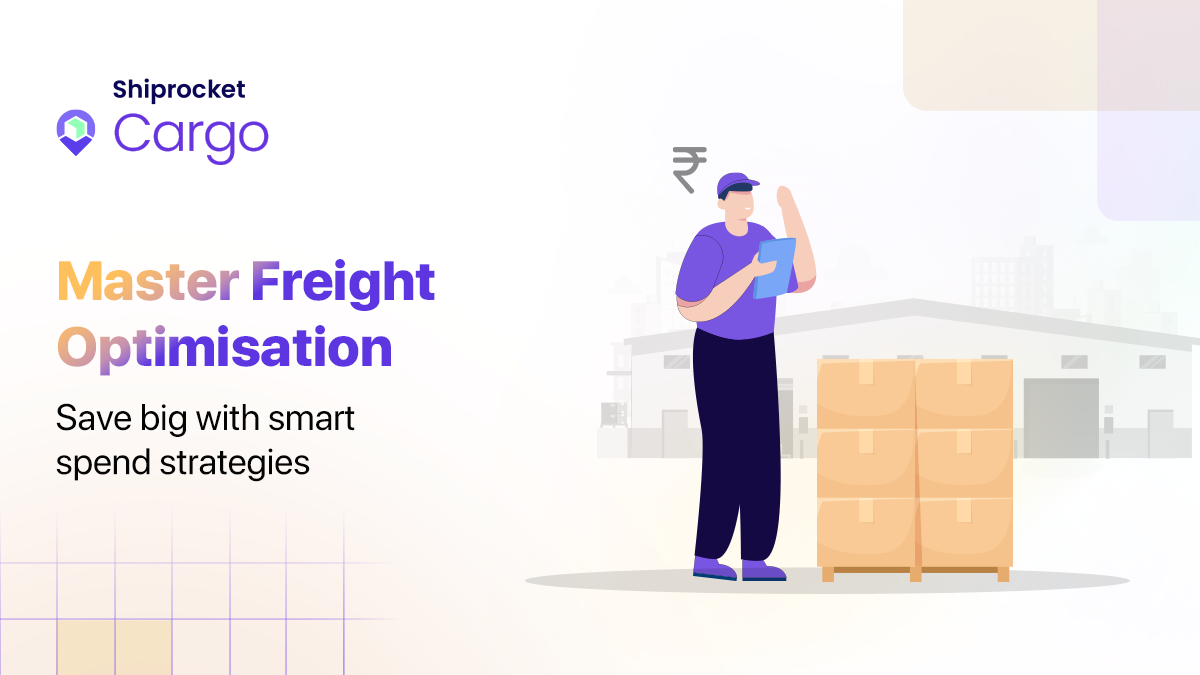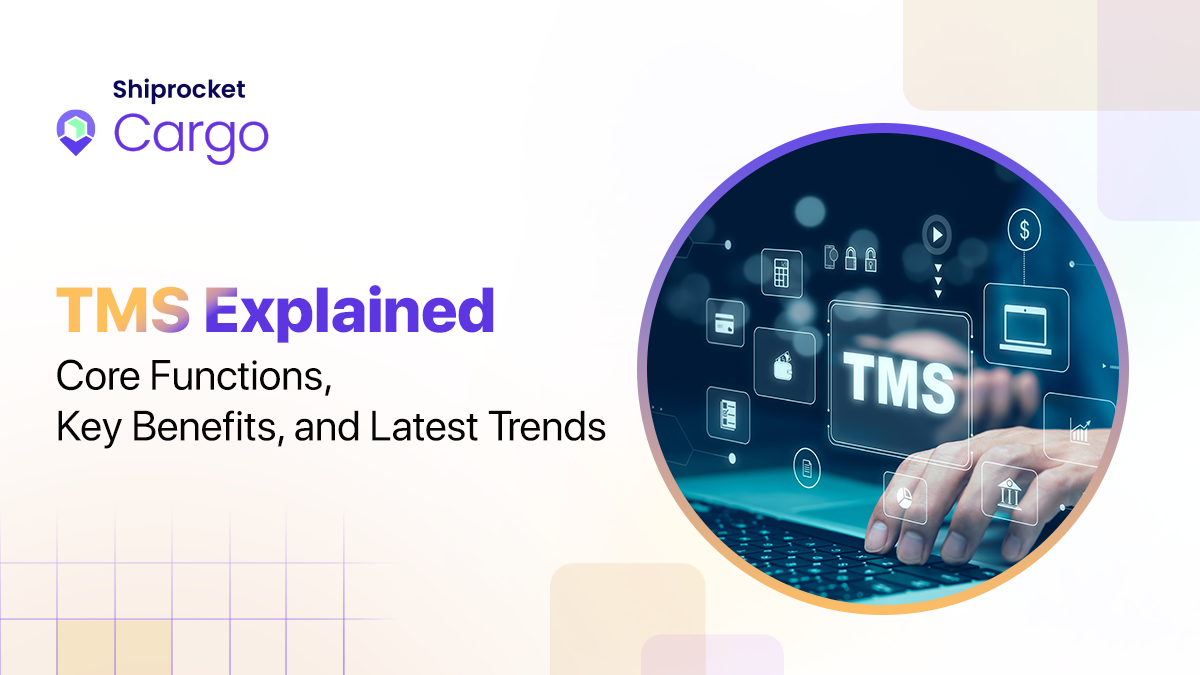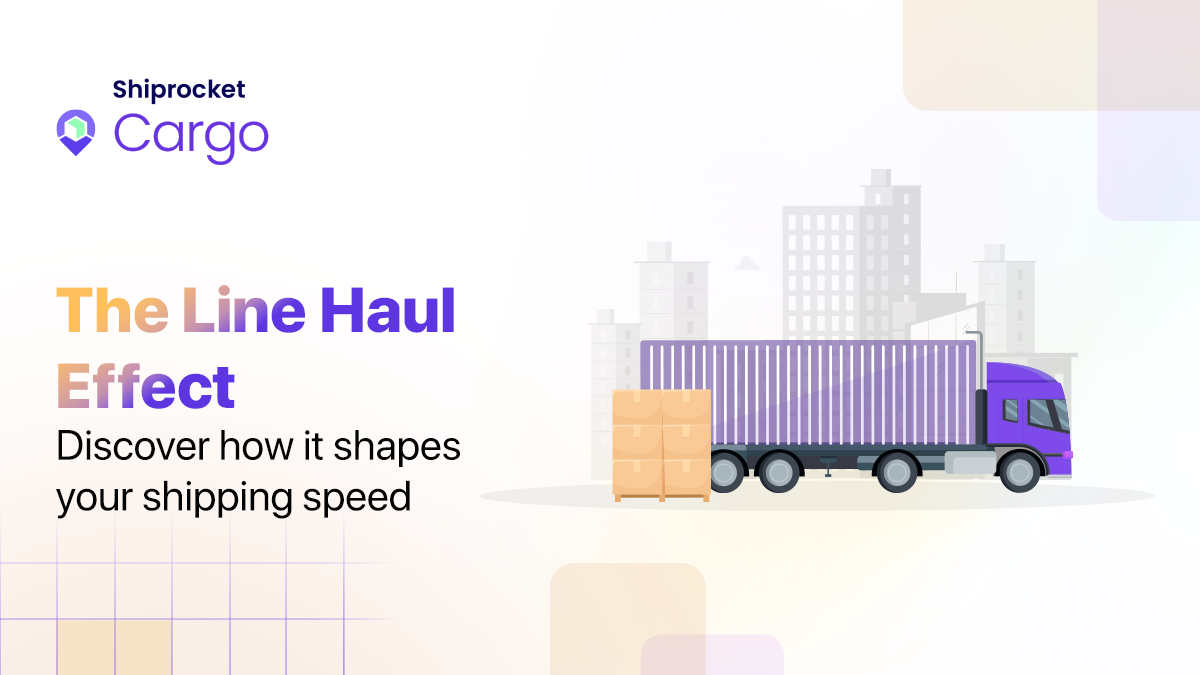How is AI Route Optimisation Transforming Modern Logistics?
- What is AI Route Optimisation?
- How Does AI Route Optimisation Differ from Traditional Route Planning?
- What are the Core Technologies Behind AI Route Optimisation?
- What Key Benefits does AI Route Optimisation Offer to Businesses?
- How Does AI Route Optimisation Improve the Customer Experience?
- What Industries and Business Models Gain the Most From AI-Powered Route Planning?
- What Challenges do Businesses Face in Implementing AI Route Optimisation?
- How is AI Route Optimisation Shaping the Future of Last-Mile and Air Cargo Deliveries?
- How does Shiprocket Cargo Help With Smarter Route Planning and Delivery Optimisation?
- Conclusion
- FAQs
Fast and reliable delivery is a challenge for sellers outside major metro areas. Narrow roads, traffic, and long distances can delay shipments, increase fuel costs, and frustrate customers. For smaller businesses, these issues directly affect sales, repeat orders, and brand reputation.
This is where AI route optimisation can help. By analysing traffic, road conditions, weather, and delivery deadlines, it finds the most efficient routes. This means quicker deliveries, lower costs, and more reliable service, even in less-connected regions.
With the global route optimisation market expected to nearly double to $15.92 billion by 2030, businesses of all sizes can access technology that improves efficiency, reduces operational strain, and enhances customer satisfaction.
In this blog, we will learn what AI route optimisation is, how it compares to traditional planning, its benefits, limitations, and how it is transforming the future of logistics.
What is AI Route Optimisation?
AI route optimisation uses artificial intelligence to plan the most efficient delivery routes. Unlike standard map apps that show only the shortest path, AI considers multiple factors, including:
- Traffic conditions
- Weather changes
- Delivery deadlines
- Driver schedules
- Vehicle fuel capacity
By analysing these variables, AI identifies routes that save time, reduce fuel consumption, and allow more deliveries per day. It acts as an intelligent assistant, helping businesses deliver faster and operate more efficiently.
How Does AI Route Optimisation Differ from Traditional Route Planning?
Here’s a quick comparison of traditional route planning versus AI-powered route optimisation:
| Feature | Traditional Route Planning | AI Route Optimisation |
| Route Decision | Based on static maps and manual judgement | Dynamic, data-driven route recommendations |
| Traffic Updates | Cannot adjust for sudden jams | Adjusts in real time for traffic changes |
| Weather Conditions | Not considered | Factored into route planning |
| Delivery Changes | Difficult to handle last-minute changes | Adapts instantly to schedule updates |
| Efficiency | Limited, may lead to delays | Optimises time, fuel, and deliveries per day |
| Reliability | Low in unpredictable conditions | High due to real-time adjustments |
What are the Core Technologies Behind AI Route Optimisation?
The power of AI route optimisation is that it involves the use of various technologies in collaboration. Some of the major ones are.
- Artificial Intelligence (AI): Analyses data and continuously improves route planning.
- Machine Learning(ML): Learns from past deliveries to predict the most efficient routes.
- Big Data Analytics: Processes large volumes of data on traffic, maps, vehicles, and customer patterns.
- Internet of Things( IoT): Connects devices like GPS trackers, delivery apps, and vehicle sensors for real-time updates.
- Cloud computing: Stores and processes data quickly, allowing access to route insights from anywhere.
What Key Benefits does AI Route Optimisation Offer to Businesses?
Companies that implement AI route optimisation have a number of benefits:
- Cost Saving: Fuel is not wasted as drivers make smarter routes.
- Time Efficiency: Faster delivery of orders means more orders in the day.
- Improved Planning: Managers can manage hundreds of deliveries without confusion.
- Fewer Errors: AI minimises the chances of human error in planning.
- Sustainability: Consuming less fuel will reduce carbon emissions, which is good for the environment.
How Does AI Route Optimisation Improve the Customer Experience?
Customers expect fast, affordable, and reliable deliveries. AI route optimisation helps businesses meet these expectations by planning smarter, more efficient routes. Here’s how:
- Accurate Delivery Times: AI dynamically reroutes deliveries to avoid traffic, ensuring packages arrive on schedule.
- Real-Time Tracking: Customers get live updates on their shipment status.
- Cost Savings Passed On: Optimised routes reduce fuel and operational costs, allowing businesses to offer lower delivery fees.
- Flexible Delivery Options: AI can automatically reschedule or reroute deliveries if a customer is unavailable.
- Reliable Service: Fewer delays and errors build customer trust and encourage repeat orders.
What Industries and Business Models Gain the Most From AI-Powered Route Planning?
AI route optimisation benefits any business that relies on timely deliveries, including:
- eCommerce & Retail: Enables large and small sellers to manage high-volume deliveries efficiently.
- Food and Grocery Delivery: Ensures hot, fresh, and timely delivery of meals and groceries.
- Logistics and Courier Services: Reduces transit times and costs while handling more shipments.
- Healthcare and Pharma: Guarantees on-time delivery of emergency medicines, vaccines, and medical supplies.
- Field Services: Helps service providers like electricians, plumbers, and technicians reach multiple clients faster.
What Challenges do Businesses Face in Implementing AI Route Optimisation?
Although AI route optimisation is potent, it is not without its challenges. Key challenges include:
- High Setup Costs: Initial investment and staff training can be expensive.
- Data Dependency: AI requires sufficient historical and real-time data to make accurate predictions.
- Technical Expertise: Managers and staff need training to operate and maintain the system effectively.
- Integration Issues: Older systems may be difficult to connect with AI tools.
- Privacy and Security: Collecting real-time data must comply with strict security standards to protect customer information.
How is AI Route Optimisation Shaping the Future of Last-Mile and Air Cargo Deliveries?
The last stage of delivery, that of delivering the package to the door of the customer, is normally the most expensive and time-consuming. This is made easier by AI route optimisation by:
- Recommending shorter, smart city routes.
- Assisting drivers to deliver multiple loads in the shortest time possible.
- Planning eco-friendly routes, reducing fuel consumption.
In air cargo deliveries, AI assists in:
- Forecasting optimal flight routes and timetables.
- Minimising weather or airport congestion delays.
- Cargo weight and fuel efficiency.
How does Shiprocket Cargo Help With Smarter Route Planning and Delivery Optimisation?
Shiprocket Cargo is a logistics platform that helps businesses manage deliveries efficiently using AI-powered tools. Key benefits include:
- Multi-Carrier Options: Choose the fastest or most cost-effective delivery partner.
- AI-Optimised Routes: Automatically recommends the most efficient routes for each shipment.
- Lower Costs and Faster Delivery: Reduces shipping expenses while speeding up delivery times.
- Real-Time Tracking: Provides live updates to share with customers, enhancing transparency.
Conclusion
AI route optimisation is transforming how goods are transported across cities, countries, and even continents. By optimising routes, reducing fuel costs, and improving delivery reliability, companies can save money while building stronger customer trust and loyalty.
Using AI in logistics drives growth, operational efficiency, and sustainability, allowing businesses to deliver smarter, faster, and more reliably in an increasingly competitive market.
FAQs
Yes, by optimising delivery schedules, reducing idle time, and preventing missed deliveries, AI lowers labour and maintenance costs, boosting overall logistics efficiency.
Yes. Small fleets can plan routes efficiently, handle more orders per day, and scale operations without additional vehicles or staff, improving profitability.
It saves on fuel, minimises emissions, and even proposes routes more suitable to electric vehicles, making logistics more environmentally friendly.
Yes, most AI platforms can connect with legacy systems, GPS trackers, and CRM software, enabling smooth data flow and centralised route management.
Yes, AI can re-route drivers in real-time to prevent delays due to accidents, construction, or other sudden road closures.



